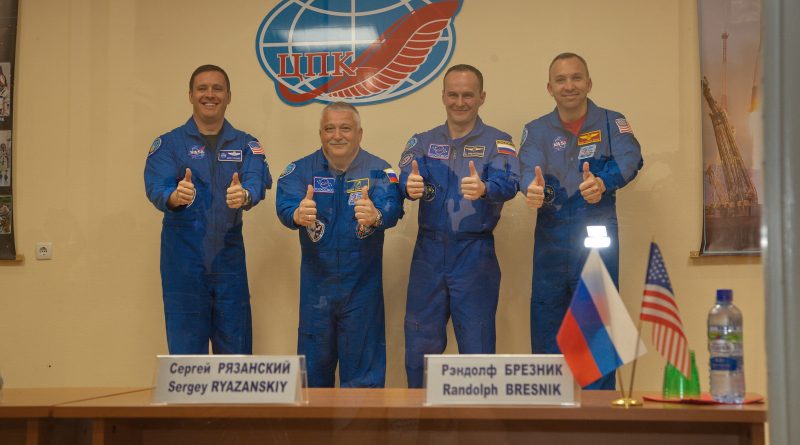Russian-American Crew Duo on the Eve of Liftoff on 136-Day Space Mission
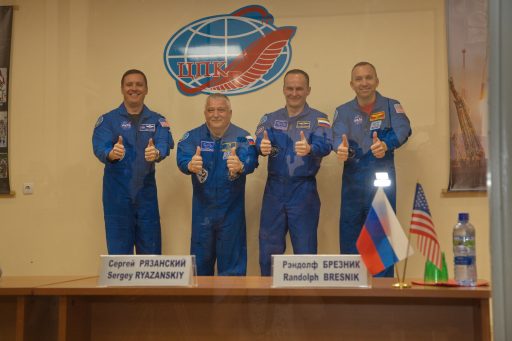
Two crewmen from the U.S. and Russia are on the eve of their liftoff on a 136-day mission off the planet, supporting world-class science aboard the International Space Station.
Veteran Soyuz Commander Fyodor Yurchikhin and NASA’s Jack Fischer are gearing up for a 7:13 UTC liftoff on Thursday atop a Soyuz FG rocket, boosting their Soyuz MS-04 spacecraft into orbit for an express rendezvous with the orbiting laboratory.
The crew’s four-and-a-half-month mission will begin with the first two-person Soyuz launch in over a decade to facilitate the reduction of the Russian crew contingent on ISS to two permanent members to cut expenses on cargo missions and reduce training resources. Thursday’s mission will be the first express rendezvous of the improved Soyuz MS vehicle that debuted last year but was forced to stick to the longer two-day rendezvous because a ground station in Russia’s far east – needed in the first minutes after arrival in orbit – was not yet compatible with the new communications system of the MS spacecraft.
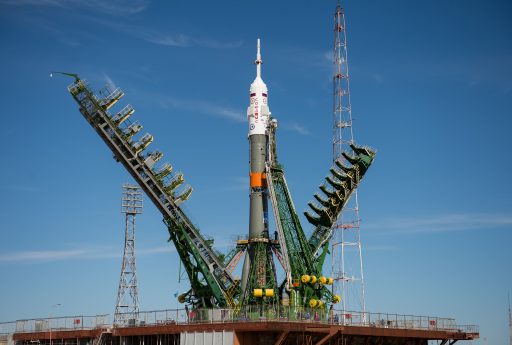
Soyuz MS-04 will join heightened activity in Low Earth Orbit this week – starting with the successful launch of Orbital ATK’s Cygnus cargo craft atop an Atlas V rocket on Tuesday, now on its way to ISS for arrival on Saturday, staying clear of the inbound Soyuz vehicle. The launch of Soyuz MS-04 is planned to be followed a few hours later by China’s first orbital logistics mission, launching atop a Long March 7 rocket out of Wenchang and headed to the Tiangong-2 space lab that orbits at a slightly lower altitude than ISS.
At the Baikonur Cosmodrome, preparations are progressing on schedule for a 1:13 p.m. local time liftoff of the Soyuz FG rocket on its 59th mission. The 49.5-meter tall rocket rolled out to the Site 1/5 launch pad Monday morning, taking its vertical liftoff position for two days of comprehensive systems tests and preparations for Thursday’s eight-hour countdown sequence.
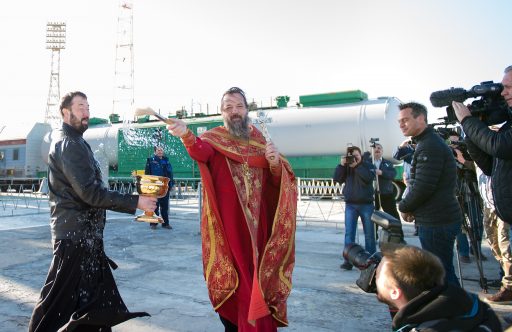
The Soyuz FG rocket received its traditional pre-flight blessing on Wednesday, administered by an Orthodox Priest – one of many traditions at the Baikonur Cosmodrome, the world’s oldest spaceport from where crews have been departing the planet for over five decades.
In a departure from a tradition of not naming their rockets and spacecraft, the Russians allowed Yurchikhin and Fischer to name the ship that will carry them to their home in space. The crew selected the name ‘Argo’ – referring to Greek Mythology. Argo was the ship in which Jason and the Argonauts sailed Iolcos to Colchis to retrieve the Gold Fleece, a symbol of authority and kingship.
Normally, Soyuz missions are only identified by their serial number and radio call sign. Only one mission prior to this carried a name – Soyuz TMA-21 in 2011 flew under the name ‘Gagarin’ to commemorate the 50-year anniversary of the world’s first crewed space mission. Naming Soyuz craft could become a new tradition – the next crew is also thinking about naming their Soyuz spacecraft, according to Yurchikhin.
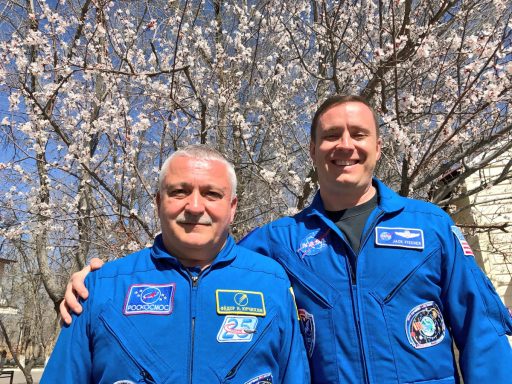
The payload shroud of the Soyuz MS-04 spacecraft is carrying a commemorative decal for the launch of Sputnik 1 in 1957 atop Sergei Korolev’s R7 rocket upon which the current version of the Soyuz rocket is still based.
The two-man crew of Soyuz MS-04 was officially approved for flight by the Russian State Commission Wednesday evening followed by the final pre-launch press conference at Site 254 of the Cosmodrome. Afterwards, the crew will turn in for a final night in the comforts of gravity ahead of a 4 a.m. wakeup to press into launch day activities.
For the crew, launch day follows an established timeline, starting with personal flight preparations at the Cosmonaut Hotel before the two crewmen and their backups will board the bus to the Cosmodrome at L-6 hours to head to Site 254 for a final medical check and suit-up. Out at the launch pad, Soyuz FG will enter propellant loading five hours before launch following a final review by the State Commission.
A half-hour bus ride will take the crew to their fully-fueled vehicle, arriving at the pad at L-2.5 hours to enter their seats atop 274 metric tons of explosive rocket fuel followed by a final checkout phase on their spacecraft leading into the automated countdown sequence to set the stage for ignition.
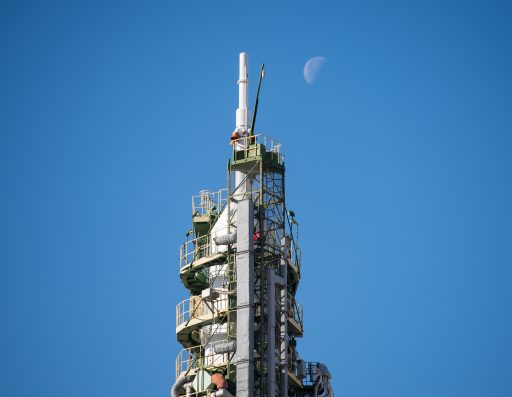
Rising from its launch pad under the loud thunder of its four-liquid fueled boosters and core stage, Soyuz will swing to the north-east to deliver the crew into the orbital plane of the Space Station. The force of raw rocket power will fade to the sensation of weightlessness eight minutes and 45 seconds after liftoff when Yurchikhin and Fischer will arrive in orbit.
Making use of the expedited rendezvous sequence, the two crewmen will not get a break and immediately ready their Soyuz spacecraft for a pair of main engine firings planned during the craft’s first lap around the planet to begin the ascent from a 200-Kilometer orbit to the Station’s 400km operational altitude. The fully automated rendezvous sequence picks up at 11:12 UTC to deliver Soyuz to the immediate vicinity of the Space Station for a flyaround and a straight-in approach to the Poisk module for docking at 13:23 UTC.
The two newly arrived crew members are scheduled to join the resident crew on ISS around two hours after docking when hatches between ISS and Soyuz will swing open.
Countdown & Launch Sequence
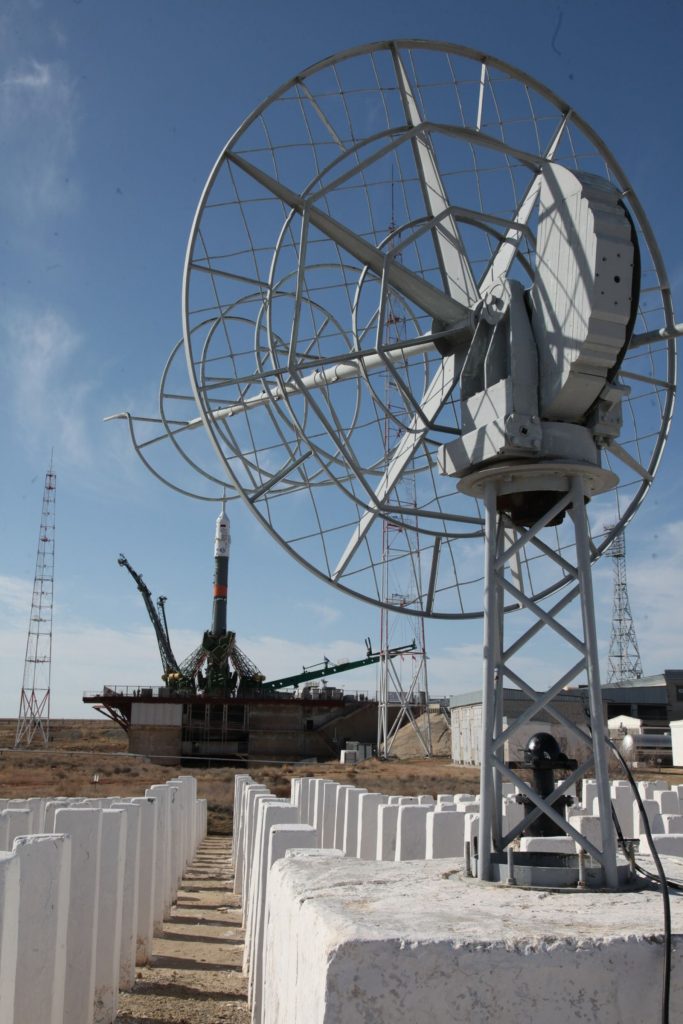
Out at Site 1/5, engineers will initiate the countdown sequence around eight hours prior to launch with the final set of fueling preparations. Once the two vehicles are activated, the Soyuz rocket and spacecraft complete a series of checkouts – communication checks, electrical testing and propulsion system testing is performed in the early stages of the countdown.
Completing final hands-on work on the launch vehicle, engineers will install batteries on the booster and remove protective covers before standing by to receive a GO for propellant loading.
Five hours and 30 minutes ahead of launch, the Russian State Commission will meet to look at the overall status of the countdown and the results of launch vehicle and spacecraft testing to provide official approval for the beginning of tanking. By that time, the tanking cars will have already been rolled up to the pad and hooked up to Ground Support Equipment used to deliver propellants to the Soyuz launch vehicle, loaded via the various umbilical masts connected to the different stages of the rocket to deliver propellant, pressurant and electrical connectivity.
Soyuz FG stands 49.5 meters tall and weighs 305,000 Kilograms when fully fueled. It can lift up to 7,200 Kilograms into Low Earth Orbit using a two-stage stack plus four liquid-fueled boosters clustered around the Core Stage.
Each of the boosters is 19.6m long consisting of a tapered and a cylindrical section with a maximum diameter of 2.68m and a launch mass of 43,410 Kilograms. Each booster is powered by an RD-107A engine delivering 838.5kN of sea level thrust.
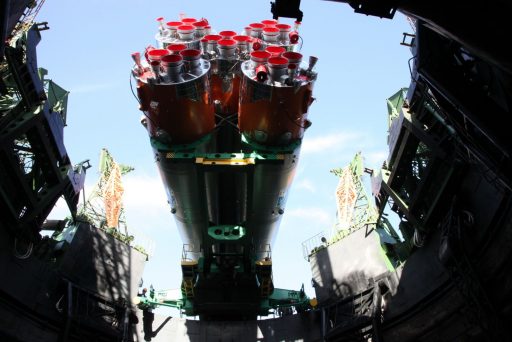
The Core Stage is ignited with the boosters and continues to burn after the boosters separate, acting as combined first and second stage. It is 27.8m tall and 2.95 meters in diameter with a total launch mass of 99,500kg. The core is powered by a 792-Kilonewton RD-108A engine and four verniers for vehicle control.
Sitting atop the Core Stage is the Block I third stage that is 6.74m long, 2.66m in diameter and weighs 25,300 Kilograms powered by a four-chamber RD-0110 engine with four vernier thrusters for vehicle control.
Over the course of a two-hour sequence beginning just inside L-5 hours, the boosters, the large Core Stage and the third stage are loaded with a total of 274,140 Kilograms of refined Kerosene and –183°C Liquid Oxygen. Additionally, the boosters and core stage will receive liquid Nitrogen to be heated during flight in order to pressurize the propellant tanks. The boosters and core stage also contain Hydrogen Peroxide that is used to drive the turbopumps of the engines.
Around L-3 hours, the crew will depart Site 254, reporting to officials and boarding a bus for a half-hour ride to Site 1/5 that is hosting its 506th launch on Thursday.
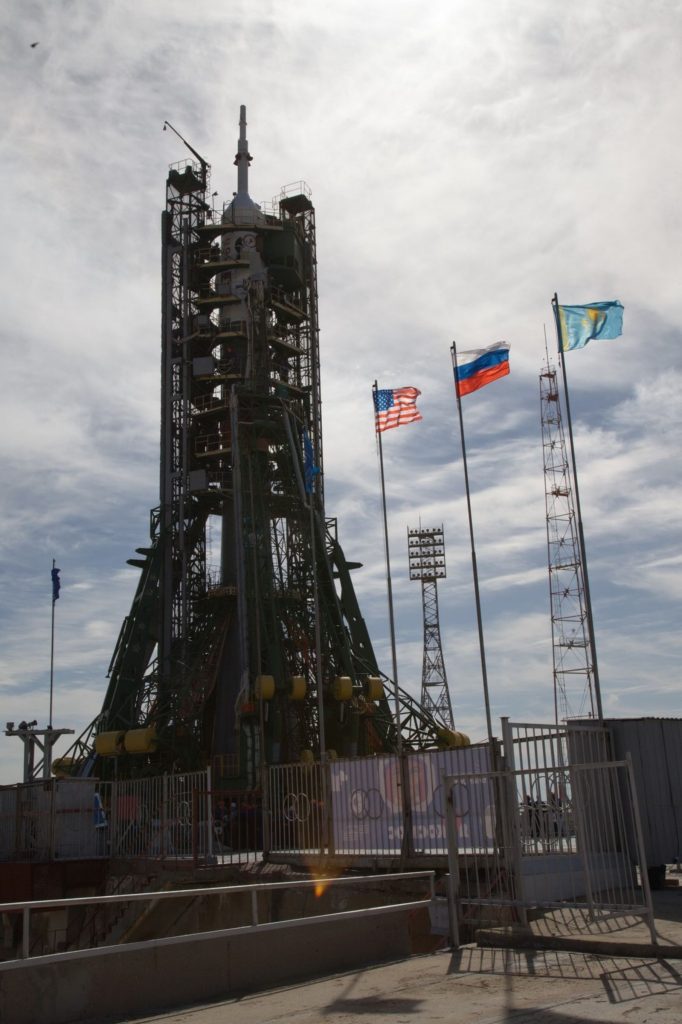
Getting off their bus, the crew members will have a look at their fully fueled rocket, take a few photos with officials present at the pad and walk over to the Service Structure stairs to wave good-bye and enter the elevator taking them up to their Soyuz for crew ingress.
Climbing into the Soyuz through a hatch inside the Launch Shroud, the crew members will – one by one – enter the Orbital Module through its side hatch before climbing down through the Entry Module’s hatch to reach their Kazbek seat liners in the confined space of the small spacecraft that the crew has to share with cargo and equipment.
Leak checks on the spacecraft pick up as soon as Soyuz has been sealed off and the crew will begin working through their pre-launch checklist that will take them about one hour to complete.
60 minutes ahead of launch, the Guidance System is activated and the flight computers receive their flight software 15 minutes later. As hands-on work at the pad wraps up, teams will retract the two halves of the Soyuz Service Structure at L-40 minutes and put all ground systems in a safe configuration. Half an hour before T-0, the Launch Abort System will be activated and switched to automatic mode – ready to pull the Soyuz to safety in case of any serious problems.
14 minutes ahead of launch, the Soyuz spacecraft is transferred to battery power and at L-10 minutes, the Soyuz FG inertial guidance system is configured for flight as gyros are uncaged and flight recorders are activated. Entering the Automated Countdown Sequence at T-6 minutes, the Soyuz launch vehicle will begin its final reconfigurations as part of a highly choreographed procedure.
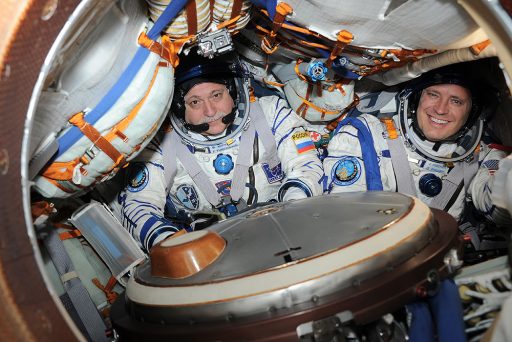
Soyuz telemetry systems are activated at T-5 minutes and the Commander Controls inside the spacecraft become active. At that point, the crew members will have closed their helmets and switched to suit air.
Three minutes before launch, the five engines of the boosters and core stage are purged with nitrogen before propellant tank pressurization starts at T-2:35. Transfer to internal power occurs one minute before liftoff and Soyuz enables its Auto Sequencer that controls the final countdown events. The third stage umbilical is disconnected at T-50 seconds and the service tower retracts ten seconds later.
With the Auto Sequencer in control of the countdown, the Soyuz starts its ignition sequence at T-20 seconds as the turbopumps of the booster and core stage engines soar to flight speed and the engines reach an intermediate thrust level before being throttled up to full thrust for liftoff.
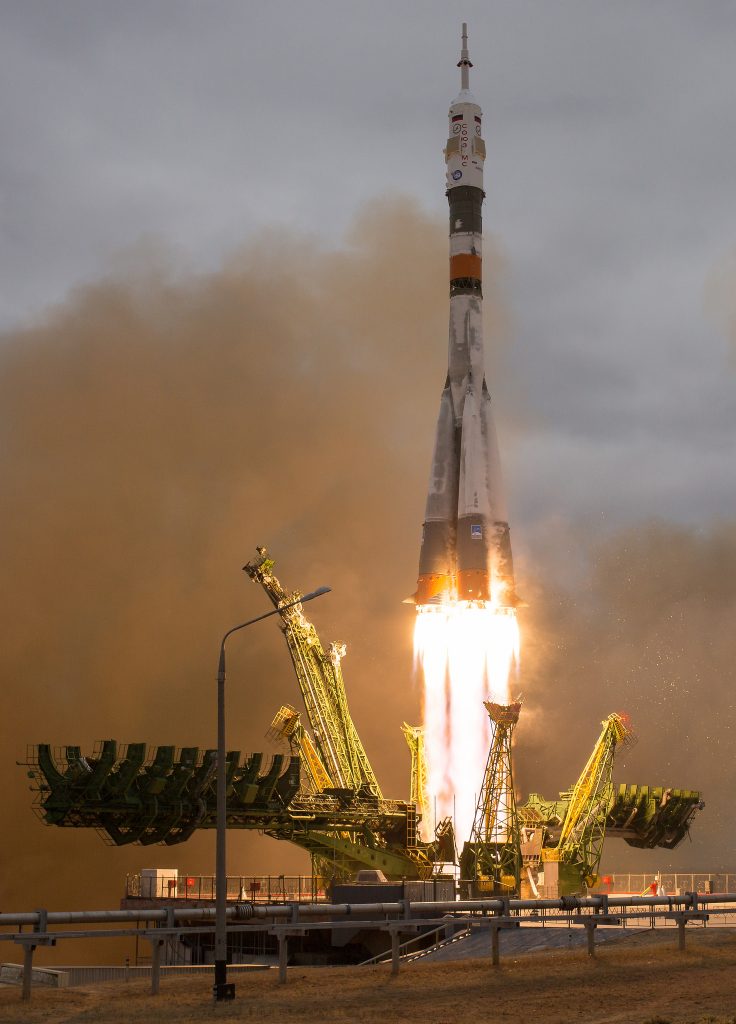
Blastoff is set for precisely 7:13:44 UTC, the optimized launch time based on the latest tracking data of the International Space Station. As clocks hit zero, Soyuz will begin rising from its launch pad with a total launch thrust of 422 metric tons, embarking on a nine-minute ascent mission following the usual flight profile.
Soyuz FG passes through Maximum Dynamic Pressure and Mach 1 a little over 70 seconds into the flight, being powered by the RD-107A engines of the boosters and the RD-108A of the core. The Launch Abort System jettisons its Escape Tower at 114 seconds into the mission, marking the transition from low- to mid-altitude abort modes in a system that provides launch abort capability all the way to orbital insertion.
The four boosters and their RD-107A engines will burn for 1 minute and 58 seconds consuming a total of 39,600kg of propellants each to provide extra boost to the vehicle. After shutdown at an altitude of 49 Kilometers, the boosters are jettisoned for a crash landing 348 Kilometers downrange.
With the boosters tumbling away from the Soyuz rocket, propulsion will only be provided by the Core Stage’s engine, delivering a thrust of 101,000 Kilogram-force. Two minutes and 37 seconds after launch, Soyuz will be over 80 Kilometers in altitude and jettison its protective Launch Shroud giving the crew a view outside through their small Entry Module windows, but the crew members will be focused on their displays, tracking the progress of their ascent into orbit.
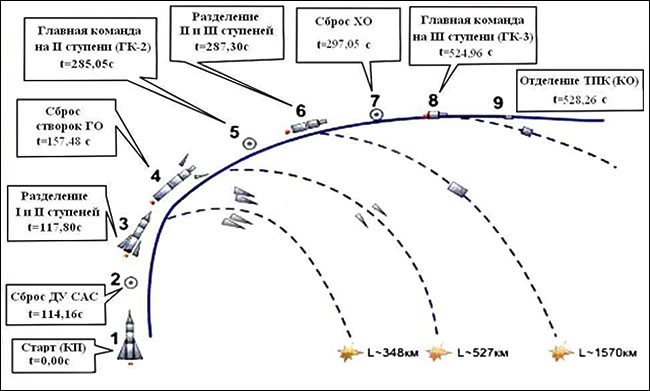
Four minutes and 45 seconds into the flight, the Core Stage will shut down its engine, marking the beginning of the hot staging sequence. Two seconds after cutoff, the third stage’s RD-0110 engine will be commanded to ignite and, at the same time, pyrotechnic bolts in the interstage will be fired to severe the connection between the empty Core Stage and the upper stage of the Soyuz that will continue powered ascent while the core heads towards re-entry and impact 1,570 Kilometers downrange from the launch site.
The third stage will fire its four-chamber engine and four gimbaling verniers for vehicle control until T+8 minutes and 45 seconds to achieve the planned insertion orbit. Just over two seconds after engine shutdown, the Soyuz spacecraft will separate from its rocket stage which itself will open up an oxygen valve to move away from the spacecraft.
Immediately after separation from the carrier rocket, the Soyuz spacecraft will begin executing a series of time-tagged commands with deployment of the two power-generating solar arrays and KURS antennas planned eight seconds after the separation signal is received.
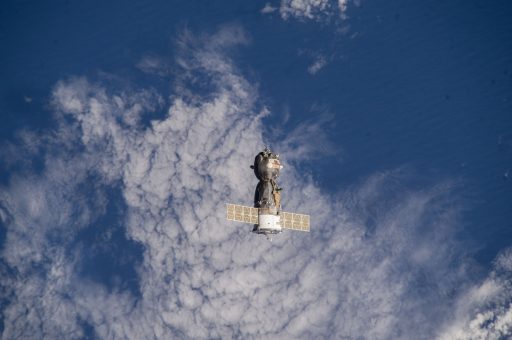
Inside the Entry Module, the crew will not be able to take a break after their exciting ride to space, immediately pressing into a reconfiguration of the Flight Control System and starting a test of the KURS system. Given the compressed timeline of the four-orbit flight profile, teams have to verify KURS is operational before Soyuz heads out of communications range around seven minutes after orbital insertion.
Mission Control will confirm the KURS system is operating as planned and make a quick spacecraft check to ensure it is safe for the crew to loosen their shoulder straps and open up their helmets as they get settled for a six-hour flight to ISS, their destination in space.
Soyuz MS-04 is targeting the standard insertion orbit of 200 by 242 Kilometers inclined 51.67° from where the spacecraft will climb to meet up with ISS that orbits the Earth in a nearly circular orbit 400 Kilometers in altitude.
Also after orbital insertion, the Soyuz spacecraft will pressurize its unified propulsion system and begin operating its DPO thrusters to reduce body rates that may have been introduced at spacecraft separation.
The four-orbit flight profile requires the Soyuz to begin raising its orbit right away given the tight timeline of the operation.
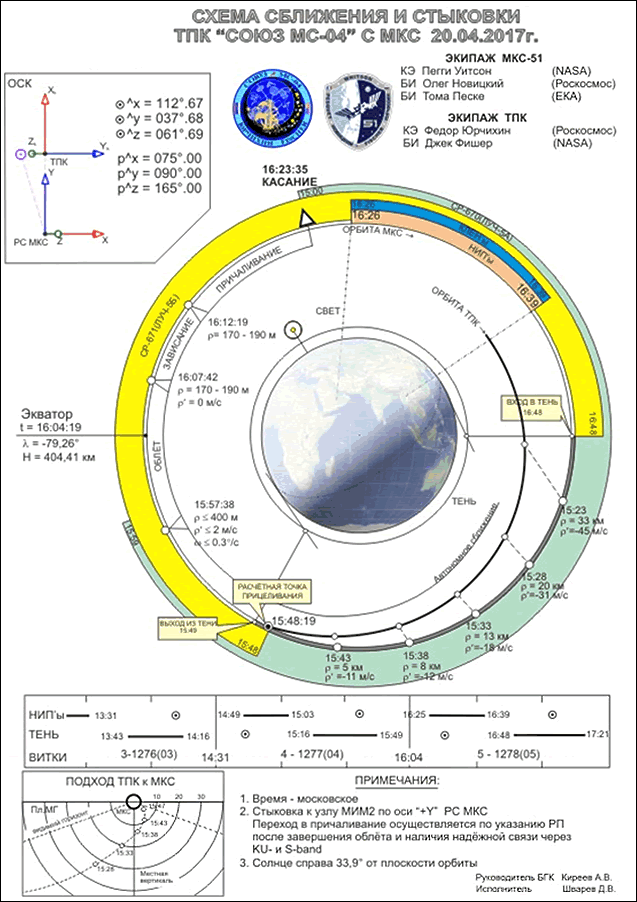
Because there is no time to uplink a revised flight plan based on the actual insertion orbit, Soyuz launches with two engine burns already programmed into its computers for execution on the first lap around the Earth. Tracking is completed after liftoff to determine the precise insertion orbit of the Soyuz which is used to calculate the post DV-2 orbit, then input into mission simulations to update burn parameters for the second orbit.
Soyuz MS-04 is set for its first orbit-raising maneuver 42 minutes after launch, half an orbit into the mission. Firing its 300-Kilogram-force SKD main propulsion system for 54 seconds, Soyuz will increase its velocity by 21.6 meters per second and raise both apogee and perigee by about 25 Kilometers.
This burn will be followed by the DV-2 maneuver one hour and 20 minutes into the flight lasting 59 seconds and aiming for a change in velocity of 23.9 meters per second to raise the perigee by 51 and the apogee by 35 Kilometers. Although Soyuz MS has the capability of communicating through the Luch relay satellites, the mission design still heavily relies on ground station passes that are used to uplink commands to the spacecraft and complete a series of checkouts prior to pressing on with the rendezvous.
Per the flight design, Soyuz can exit its fast-track rendezvous after the first two DV maneuvers and revert to the 34-orbit flight profile should anything be amiss after the spacecraft’s ride to orbit.
The third orbit-raising maneuver occurs two hours and four minutes after launch and aims for an orbit of 297 by 314 Kilometers followed half an hour later by DV-4 that will boost Soyuz into a 302 by 333-Kilometer orbit. In this orbit, Soyuz will coast until the initiation of the automated rendezvous process at 11:12:19 UTC. Another ground station pass will be used by Commander Yurchikhin to operate the rotational and translational hand controllers of the Soyuz to fly it in manual mode for a few minutes to ensure good control would be available in case the need for a manual docking arises.
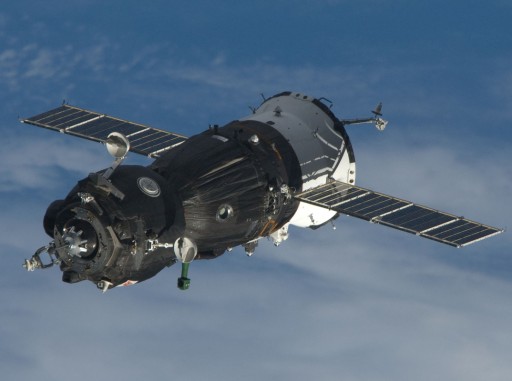
The DV-5 burn will occur a few minutes after rendezvous initiation and further raise the orbit of the Soyuz, putting it on a path to enter the 200-Kilometer communications zone around ISS at around 11:35 UTC. Arriving at a position 200km from the Station, Soyuz will activate its KURS-NA system and its counterpart on ISS will be powered up as well. Initially searching for the signal, Soyuz will lock on KURS and begin calculating range, range rate and the relative geometry between itself and ISS to guide the craft to the vicinity of the Station through a series of Rendezvous Impulse Burns.
A VHF comm link between Soyuz and ISS will be available to provide Mission Control a continuous data and voice link with Soyuz in addition to the Luch relay link which is only available when Soyuz is in an optimized comm attitude, creating drop outs when the spacecraft is maneuvering.
The validity of KURS navigation data will be checked twice, when Soyuz is at 80 Kilometers and closer in at 15 Kilometers to make sure the system is feeding good navigation data to the flight computers.
Initially flying towards a Ballistic Target Point, Soyuz will begin correcting the intentional target offset by making a series of thruster burns that will require the craft to move between burn attitude and Line-Of-Sight attitude.
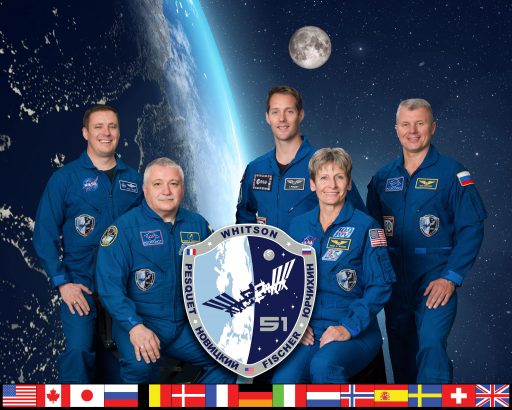
Reaching a distance of 400 meters to ISS, Soyuz will initiate its flyaround sequence to slowly move around the Station to get aligned with the Poisk module. After the seven-minute sequence, Soyuz will come to a stop 200 meters from the docking port, entering a short period of Stationkeeping so that the crew and the ground can check the alignment. Once Mission Control provides a go for final approach, Yurchikhin will issue the command for Soyuz to pulse its DPO thrusters and initiate a slow closing rate.
With its DPO thrusters, Soyuz will maintain a good alignment as it slowly moves in for docking, planned at a glacial speed of 0.1 meter per second. Contact and capture is expected at 13:23:35 UTC, just over six hours after liftoff, to mark the arrival of two crew members at the Space Station for a 4.5-month stay as part of Expedition 51/52. The exact time of docking will depend on the progress of the flight and the time needed during Stationkeeping.
After docking, Soyuz will retract its docking probe and hooks between the Soyuz and Poisk will be closed to establish a tight coupling between the two spacecraft. Leak checks will be conducted while the crew can finally get out of the Sokol launch and Entry suits before opening up the hatch to ISS at around 15:05 UTC.

